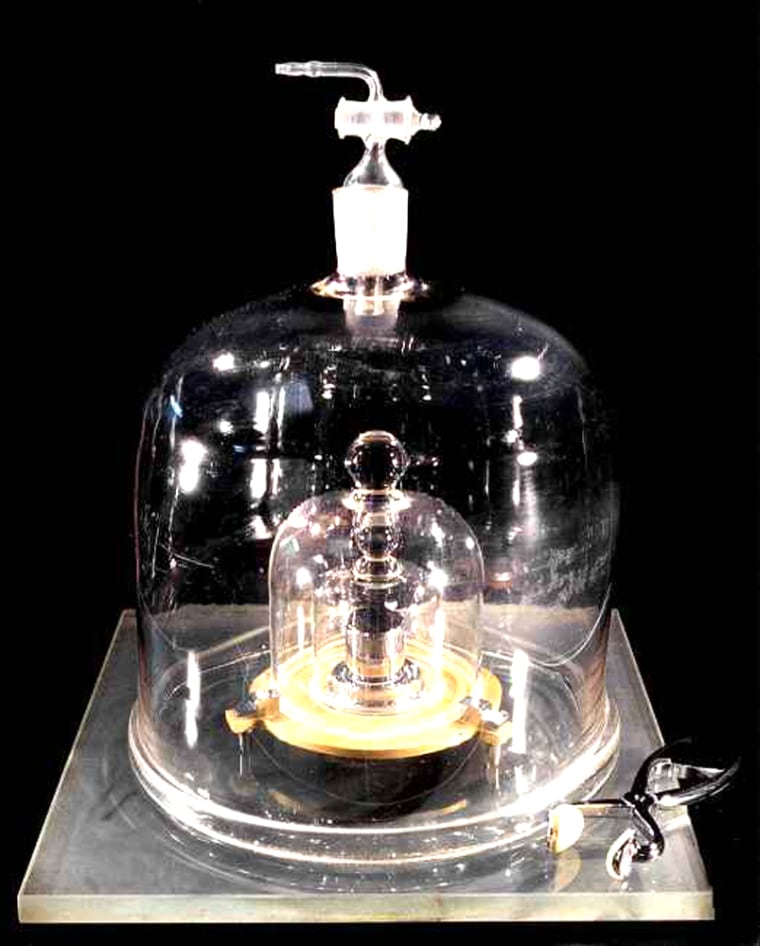For 115 years the "gold standard" of mass has been a kilogram (2.2 pounds) of platinum-iridium alloy, specially housed outside of Paris. Now a group of scientists is arguing that the artifact is archaic and the time has come to redefine this most basic measuring unit.
"If you buy a kilogram of flour from France, you know it is the same as it is here," said Peter Mohr from the National Institute of Standards and Technology in the United States.
This is because all high-precision scales around the world are traceable to the plum-sized cylinder of metal — "The Kilogram" — at the Bureau International des Poids et Mesures. Other countries bring their standards to Paris to compare — something the United States has done three times since the inception of the international standard in 1889.
Go natural
But in a recent article in the journal Metrologia, Mohr and his co-authors say these trips can be made unnecessary by defining mass in terms of a natural phenomenon.
The meter, which was also based at one time on a platinum-iridium rod at the BIPM, has since been set equal to the distance that light travels in one-299,792,458th of a second.
The kilogram is the only basic unit of the international measurement system still defined by a physical artifact.
Mohr and colleagues offer two suggestions for a new kilogram standard. One is to use a watt balance, in which a magnetic force levitates an object. The other involves counting the number of atoms in a silicon crystal using X-ray imaging.
Any country can make one of these standards for themselves. And they do not change with time, as do physical artifacts. Metals — even highly stable ones like platinum-iridium — are known to gain weight due to chemical reactions with the air.
"Two standards will tend to diverge from each other," Mohr told LiveScience in a telephone interview. "Changes of 50 parts per billion have been seen over a hundred years."
This may not sound like a lot, but the uncertainty in mass weighs in on other measurements — particularly microscopic ones. Adopting new standards could make some electrical measurements more precise by 50 times or more.
"These improvements tip the scales in favor of the redefinition," Mohr said.
Heavy consequences
On the flip side, though, gains at the microscopic level come at the price of less precision when weighing big stuff. The new technology cannot yet match the old way of comparing two weights on a balance.
For this reason, the BIPM cylinder will probably stick around for a while. Most scientists agree, however, that it will eventually be replaced.
"A meteor could strike Paris — destroying the prototype," Mohr pointed out. "The watt balance can always be re-created."
